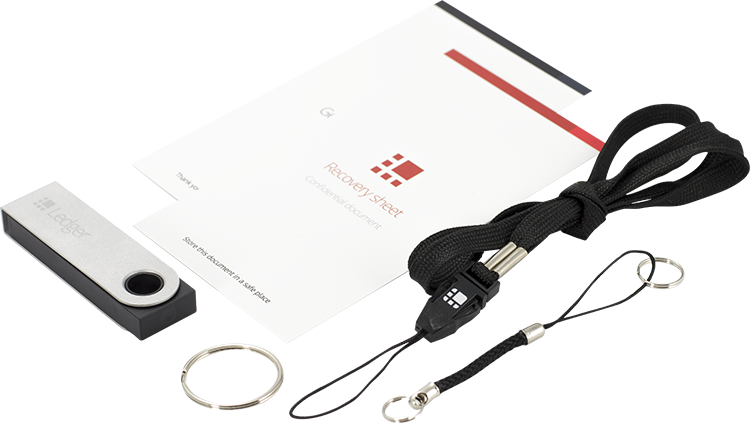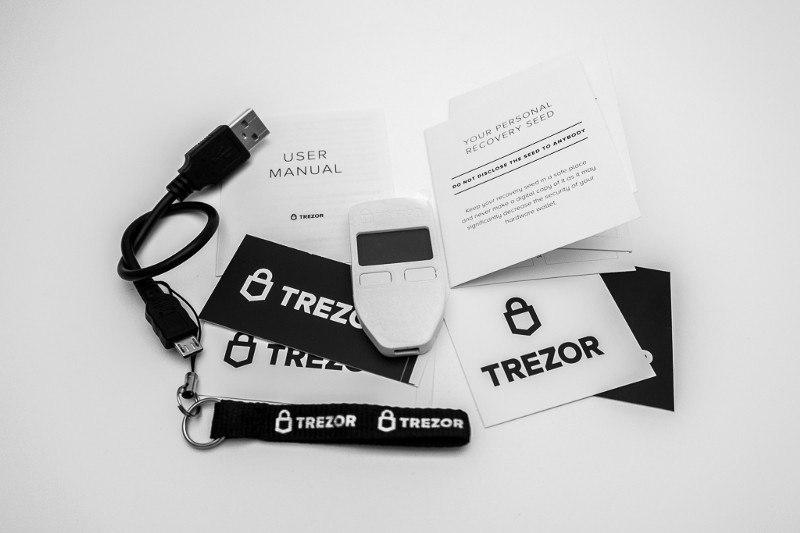Find out which hardware wallet is best for storing crypto with our 2018 Ledger Nano vs Trezor guide.
Ledger Nano and Trezor are two of the most secure hardware wallets available on the market today and are hailed as the only serious options when it comes to storing your cryptocurrency. But what makes them so special and which of the two should you choose? Read on to find out which hardware wallet suits you in our Ledger Nano vs Trezor showdown.
Why should I use a hardware wallet?
Whether your a small time investor or a crypto whale, hardware wallets are crucial because they add an extra layer of security that makes it almost impossible for hackers to steal your cryptocurrency.
In simple terms they work by physically storing your private keys on the device. By “signing” a transaction on your hardware wallet you ensure that your transfer is never tampered with. This means it never crosses over to your computer which in turn keeps it safe from keyloggers, viruses and phishing attempts. So in essence even if your computer is compromised you can carry out a secure transfer on it without being compromised.
This is achieved by the physical checks and inputs required to perform the transaction. For example you can only gain access to the hardware wallet by entering the correct pincode. Even then user has to physically check and confirm a transaction with a physical click before it is ever signed and submitted to the blockchain.
This means the only way for a perpetrator to steal funds is to know the users pincode AND to be in possession of the device. So in the event that your hardware wallet is lost or stolen, without the passcode it is useless. To avoid brute force attempts the device will also reset itself after a set number of failed attempts e.g 3 attempts on the Ledger Nano S.
However the owner can simply restore the wallet on to any new device by using the seed words you generated when setting up the device.
Ledger Nano S
The Ledger Nano S connects to any computer that has a USB port, is operated by a cool OLED display featuring a robust chrome design. The Ledger Nano S supports several major cryptocurrencies including Bitcoin, Ethereum, ZCash, Dash, Komodo, Ripple, Stratis, Stellar, PIVX. The device also works seamlessly with MyEtherWallet meaning you can also store any ERC-20 tokens on it.
The Ledger Nano S is priced at €94.80 with VAT
Click here to buy from: https://www.ledgerwallet.com/
Trezor
Developed by Satoshi Labs, Trezor claims to be the most secure and original hardware wallet. Like the ledger it isolates your private keys so you can enjoy cryptocurrencies without the risk. The minimalist device supports a wide variety of digital currencies including Ethereum, Dash, Ethereum Classic, ZCash, Litecoin and is also ERC-20 compliant.
They also claim to be used by some of the biggest names in crypto from bitpay to Bitstamp through to Bitwala.
The Trezor is priced a €107.69 with VAT
Click here to buy from: https://trezor.io/
Appearance
Both devices say they are made out of durable plastic. The Ledger Nano comes with a metal flip cover which can be used to give the screen a little more protection although it feels slightly more fragile than the Trezor. The Trezor claims to be waterproof where as the Ledger Nano S does not, although one user submerged the device into a glass of water and it still works as seen here:
Each devices comes with just two buttons for simple navigation. The Trezor connects with a Micro USB to desktop or mobile, the Ledger Nano is USB Type Micro-B.
Both devices are similar in length, the Trezor is 60mm x 30mm x 6mm where as the Ledger Nano S is 98mm x 18mm x 9mm when the metal flip is open.
What’s in the box
Ledger Nano S
The device used to come with a tamper proof seal but these are discontinued as they have found to be useless so don’t expect to see this on the new ones. In fact the manufacturer makes a points of no tamper proof seal being required – given that the seed is generated by the user anyway.
Inside the box you will find the device, a USB cable for connecting the device to your computer, keyring, the instruction sheet and the recovery sheet for writing down your seed.
If you want to keep the device on your person at all times, the keychain and lanyard can be used for placing around your neck, be aware these may break and possibly puts your hardware wallet on display to the world.
Ledger Box Contents:
- Ledger Nano S
- USB Type Micro cable
- Key Chain
- Lanyard for neck
- Instruction Card
- Recovery Sheet

Trezor
The packing is slick. Unlike the Ledger Nano it comes with two tamper proof security seals at both ends which arefinished with a thin plastic foil coating. If the seals are broken this means the device should not be used as it could of been compromised by a 3rd party.
The Trezor also comes with a lanyard although this is not long enough to fit around your neck. It can however be used to keep the device on your keychain with your car keys for example.
Trezor Box Contents:
- TREZOR
- Micro USB cable
- Two booklets for storing recovery seed
- Lanyard
- User manual
- Set of stickers (4 pcs)

If you want to keep the hardware wallets on your person at all times we recommend investing in a durable lanyard made with thicker material to ensure it has less chance of snapping.
Setting up the devices.
If you follow the instructions provided with the device both the Trezor and Ledger Nano S are very easy to set up for the non tech-savvy and the process is very similar for both devices.
The official setup guides for both devices ask the user to ensure that the latest firmware is installed before hand.
Setting up your Trezor hardware wallet
To get started with the Trezor you are required to go with one of four methods to interact with the device, the Tezor bridge software, through the chrome extension, Android app or the Python tools for experienced users.
Once the device is connected you then need to install the latest firmware as its not pre-installed (don’t use the device until its installed). Visit https://wallet.trezor.io/
When you have installed the firmware the device can be turned on and off by unplugging the USB cable. AT which point so you can setup the wallet. Visit: https://wallet.trezor.io/
The first step will require the user to create a PIN code which is used to access the device each time, the second step will be generating and backing up the 24 word recovery seed. You must make sure this is 100% correct. Failure to ensure this will end in tears. We recommend setting up the device, transferring a very small amount of coins to it and then trying to restore the device using the seed you wrote down to ensure it is correct.
Setting up your Ledger Nanos S hardware wallet
To setup the Ledger Nano S from scratch you will need to plug in the device with the USB cable provided. The screen will then prompt the user to press both buttons simultaneously to configure as new device or restore from an existing seed.
The next step will ask the user to create a PIN code which is used everytime you turn on the device. If you lose this or enter it incorrectly the device will lock and the 24 word recovery seed will have to be re-entered to restore the wallet.
After configuring the PIN the next step is to write down the 24 word security seed on the sheet provided in the box. Like the Trezor you must write this down correctly. To minimise errors the device will then ask you to confirm these words in a random order.
Like the Trezor we recommend transferring a tiny amount of crypto to the newly set up wallet and then entering the wrong PIN. This will reset the device and allow you to restore using the recovery seed. This will guarantee that you have written these down correctly and adds peace of mind.
Setup conclusion
Setting up both devices is extremely easy/ intuitive for non tech-savvy users, but the Trezor screen is easier to read as the text feels sharper on the bigger screen.
Supported Coins.
Both devices support a wide range of coins. The Ledger Nano S supports more and is regularly expanding this.
Ledger Nano S supported coins
Bitcoin, Bitcoin Cash, Bitcoin Gold, Ethereum, Ethereum Classic, Litecoin, Zcash, Ripple, Dash, Stratis, Komodo, Ark, Expanse, Ubiq, Vertcoin, Viacoin, Neo, Stealthcoin, Stellar, Hcash, Digibyte, Qtum, Pivx, ERC-20 tokens.
Trezor supported coins
Bitcoin, Litecoin, Dash, Zash, Bitcoin Cash, Bitcoin Gold, Ethereum, Ethereum Classic, ERC-20 tokens, Expanse, Ubiq, NEM.
What’s better the Ledger Nano S or the Trezor?
Ledger Nano vs Trezor… this was a hard one to compare but after using both devices it would be hard to choose a clear winner as both are fairly similar in how they work in terms of functionality. The purchase cost isn’t a deciding factor either with both devices being similar in price.
Both devices now support MyEtherWallet which is the most popular way to control, manage and send ETH and ERC-20 tokens.. The Ledger Nano S provides greater support for further cryptocurrencies such as Stratis and PIVX etc.
Both devices have had their fair share of security vulnerabilities but nothing that would severely compromise your private keys.

